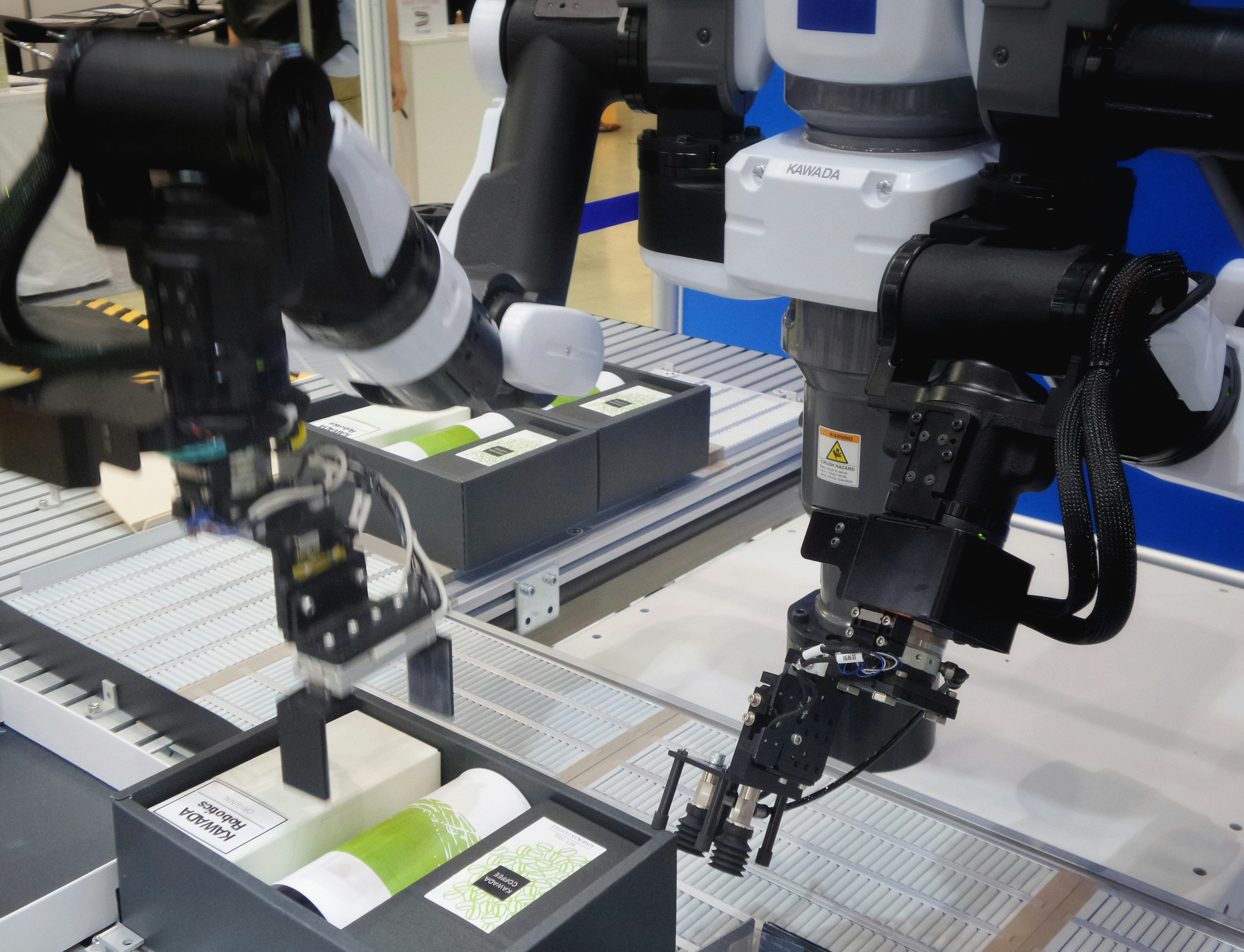Here’s a mind-bending fact: manufacturing plants gobble up over one-third of the world’s energy!
That’s right - from the phone in your pocket to your morning coffee cup, everything we make comes with a hefty energy price tag.
But here’s where things get exciting: smart manufacturers are turning this energy challenge into their biggest opportunity through industrial energy management. By optimising energy use, they’re not just cutting costs—they’re revolutionising how factories run. Industrial energy management goes beyond basic efficiency; it’s about strategic control of energy consumption, real-time optimisation, and integrating smarter technologies. It’s becoming the secret weapon that separates industry leaders from the pack.
The Manufacturing Energy Challenge
Manufacturing plants eat up a whopping 37% of global energy consumption - yeah, you read that right! Thus, smart industrial energy management isn’t just good business sense anymore; it’s becoming the backbone of modern manufacturing operations. Think of energy efficiency as manufacturing’s secret weapon - it’s the fastest, cheapest way to slash carbon footprints while boosting bottom lines.
What’s really cool? The industrial energy efficiency market is on track to hit $41.2 billion by 2030, growing at 8.6% yearly. Many engineers and plant managers now call energy efficiency the “fifth fuel” after coal, gas, nuclear, and renewables. It’s like getting more output from less input - who doesn’t love that math? By cutting energy waste, plants reduce operational costs, meet environmental regulations, and stay competitive in today’s market.
Know Your Numbers: Energy Audits That Work
Want to save big on energy costs? Start with an energy audit - it’s like a medical check-up for your plant. Data collection and real-time monitoring show exactly where your energy dollars go. Industrial energy management systems (EMS) track usage patterns minute-by-minute, helping you spot power-hungry processes and equipment.
The secret sauce? Setting baseline consumption levels. By measuring current energy use, you can track improvements and celebrate wins. Think of it as creating an energy road map - you need to know where you're starting to figure out the best route forward. With solid data in hand, plant managers can make smart decisions about where to focus their improvement efforts first.
At CoolPlanet, we take energy audits to the next level by combining deep industry expertise with cutting-edge technology. Our audits don’t just highlight inefficiencies—they uncover actionable opportunities for cost savings, carbon reduction, and operational improvements. In a recent audit for a global manufacturing facility, CoolPlanet identified multiple areas where significant energy reductions were possible such as:
- Compressed Air Leaks & Inefficiencies – A common but costly issue, undetected leaks, and oversized compressors were driving up energy bills. By optimising air system performance, we found opportunities for 10-30% savings.
- HVAC & Process Heating Optimisation – Smart scheduling and control adjustments led to immediate reductions in wasted energy, lowering operational costs with minimal investment.
- Idle Equipment Consumption – Our real-time monitoring flagged machinery running outside of production hours, offering a quick win by automating shutdown schedules.
- Waste Heat Recovery – We pinpointed areas where excess heat could be repurposed, reducing reliance on primary heating sources.
The key to success? We go beyond reports and provide a roadmap for action. Using CoolPlanetOS, our proprietary industrial energy management platform, we deliver real-time visibility into plant-wide energy use, turning insights into measurable impact. Our system not only tracks historical performance but also predicts potential savings, allowing companies to prioritise high-return initiatives.
For manufacturing plants looking to cut costs, boost efficiency, and enhance sustainability, an energy audit isn’t just a one-time check-up—it’s the first step in a smarter, more profitable energy strategy.
Smart Equipment Upgrades That Pay Off
Ready to cut those energy bills? Let's talk about equipment upgrades that make a real difference. Commercial LED lighting systems are the low-hanging fruit - they use up to 75% less power than traditional bulbs while lasting way longer. But that’s just the start.
High-efficiency motors and drives are game-changers on the factory floor. These bad boys can slash power consumption by 30% or more compared to standard equipment. And don’t forget about HVAC systems - modern units with variable speed drives and smart controls keep your plant comfortable while keeping costs down.
The proof is in the numbers: We helped one manufacturing client switch to energy-efficient equipment and save $2.1 million annually on power bills. Another food processing facility cut their energy use by 40% just by upgrading their motors and pumps. Small changes, big results - that’s smart manufacturing in action.
At CoolPlanet, we specialise in high-impact equipment upgrades that deliver measurable results. A recent lighting retrofit at a pharma plant site saved 122,872 kWh annually, reducing carbon emissions by 36.35 tons. In another pharma project, we replaced inefficient belt-driven AHU fans with Electrically Commutated (EC) Fans, cutting electricity use by 42% and significantly reducing maintenance costs. These upgrades don’t just lower bills—they future-proof your facility, ensuring that every watt of energy is used as efficiently as possible.
Making Production Lines Energy-Smart
Think of your production line as a chain - it’s only as efficient as its weakest link. Smart manufacturers are taking a page from lean principles to cut energy waste at every step. By removing unnecessary processes and fine-tuning workflows, plants can produce more while using less power.
Here’s what works: we start by mapping out your production flow and spotting energy-hungry bottlenecks. Maybe it’s machines running empty between batches, or heat getting wasted instead of recovered. Small tweaks add up - like adjusting machine speeds to match actual production needs or combining steps to reduce start-up cycles.
Doing this, we helped one manufacturing plant cut power use by 25% just by syncing their equipment schedules with production demands. We also helped LDC Sablé-sur-Sarthe achieve a 83% reduction in scope 1 emissions and 10% in energy savings through optimising controls of heat pumps and refrigeration systems.
Making Manufacturing Smarter with IIoT
The Industrial Internet of Things (IIoT) is changing how plants track and control their energy use. Picture tiny sensors scattered throughout your facility, measuring power consumption, machine performance, and environmental conditions in real-time. It's like having thousands of energy scouts reporting back every second.
Smart factories use this data goldmine to spot energy waste instantly. When a machine starts pulling more power than usual, the system flags it. Before IIoT, you might not notice until the monthly bill arrived - now you can fix issues on the fly.
Predictive maintenance tools take it further by catching energy-draining problems before they happen. For one of our manufacturing clients, we deployed CoolPlanetOS alongside a full rollout of smart sensors and metering, unlocking £250k in energy savings in just 10 weeks. This IIoT-driven approach led to £90k saved from preventing boiler failures and £122k in capital cost avoidance through smarter process optimisation. Monitoring of the chiller and compressor units also revealed unnecessary energy use outside production hours, with simple behavioural changes resulting in savings of over £15k.
Turning Waste Heat into Wealth
Ever wondered what happens to all the heat your machines generate? In many facilities, this valuable energy simply disappears into the air or water, wasted. But smart manufacturers are turning waste heat into a powerful asset with heat pump technology, slashing energy costs and carbon emissions in the process.
Heat pumps can capture and upgrade low-grade waste heat, making it useful for industrial processes like water heating, pasteurisation, or even space heating. This approach significantly reduces reliance on fossil fuels and improves overall energy efficiency. At a meat processing plant in Poland, CoolPlanet installed an industrial heat pump system that preheats water, previously heated by an expensive district heating system, while simultaneously providing refrigeration. With a COP greater than 10, the system delivers exceptional efficiency, cutting thermal energy costs and reducing CO₂ emissions by leveraging renewable electricity.
Another great example is the Bulmers beverage production facility in Ireland, where CoolPlanet identified an opportunity to recycle waste heat from beverage cooling and reuse it in the pasteurisation process. Using insights from CoolPlanetOS, the team designed a high-pressure and temperature heat pump to make this energy loop possible. This innovative solution helps the facility significantly cut gas consumption without increasing operational costs—a crucial step for high-temperature heat users.
The secret to making waste heat recovery work? It starts with mapping out where your heat is being wasted and where it can be reused. Hot exhaust gases could preheat process materials, while heat from cooling systems might provide hot water or space heating. With the right technology—like heat pumps and intelligent energy monitoring—waste heat stops being a liability and becomes a competitive advantage.
Going Green: Making Your Own Power
More manufacturers are taking control of their energy future by generating clean power right at home. Solar farms and solar panels on factory roofs do double duty - they cut electricity bills while providing shade that reduces cooling costs. For example, CoolPlanet helped Hibernia Steel generate 40% self-sufficiency with solar.
Battery storage systems help plants get the most from their renewable setup. They store extra power during sunny or windy days and feed it back when needed. Commercial battery storage helps plants get the most from their renewable setup. They store extra power during sunny or windy days and feed it back when needed. At a leading pharmaceutical site, CoolPlanet installed a 2.5MW/2.5MWh Battery Energy Storage System (BESS) to enhance the facility’s energy resilience. The BESS provides approximately one hour of backup capacity in the event of a grid blackout, ensuring business continuity and security of supply. It also supports the grid by delivering fast-acting frequency response services and generating revenue through demand response payments.
These strategies don’t just cut costs—they future-proof businesses against rising energy prices while shrinking their carbon footprint.
Getting Everyone on Board: The People Factor in Energy Savings
Let’s talk about your most powerful energy-saving tool - your team! Smart manufacturing plants know that real energy savings start with the folks on the factory floor. One chemical plant saw a 15% drop in power use after starting “Energy Champion” initiatives where workers spot and report energy waste.
The trick? Make it fun and worth their time. Some plants run monthly contests where teams compete to cut energy use, with winners getting bonuses or extra time off. A metal fabrication plant gave out $50 gift cards for energy-saving ideas - they collected 127 suggestions in three months and saved $80,000 on power bills.
The key to lasting impact? Education and engagement. That’s where CoolPlanet’s Rewrite programme comes in. Rewrite is a climate education programme designed to upskill employees, build climate literacy, and create real cultural change around energy efficiency. It equips teams with the knowledge and tools to spot inefficiencies, reduce waste, and actively contribute to sustainability goals. With inspiring case studies and practical insights, Rewrite makes energy awareness easy, actionable, and accessible to everyone in the business—ensuring that every employee plays their part in your company’s efficiency journey.
Getting Smart with Energy Management Systems
Want to take control of your plant’s energy use? Energy Management Systems (EMS) are your mission control center. These systems track power consumption, spot waste, and help you make smart decisions in real-time. It’s like having an energy detective watching every watt.
ISO 50001 gives you a proven game plan. This standard helps plants set up smart energy policies, track progress, and keep getting better. At CoolPlanet, we helped one food and beverage processing company use ISO 50001 to cut their energy bills by 19% per annum.
The real magic happens with continuous improvement. Plants using an energy management system keep finding new ways to save - tweaking settings, fixing leaks, and training teams.
But the real transformation happens with continuous improvement and real-time insights. That’s where CoolPlanetOS comes in. More than just an EMS, CoolPlanetOS is a powerful energy optimisation platform that goes beyond tracking—it actively benchmarks energy performance, identifies inefficiencies, and recommends data-driven improvements.
With CoolPlanetOS, plant managers don’t just track energy use—they optimise it, ensuring that every process, piece of equipment, and facility operates at peak efficiency. The result? Lower energy bills, higher productivity, and a future-proofed plant ready to take on new challenges.
The Real Hurdles in Making Plants Energy-Smart
Let’s get real about the speed bumps on the road to industrial energy efficiency. The biggest headache? Money. New equipment and systems can cost big bucks up front, even if they pay for themselves later.
Production hiccups are another worry. Swapping out old machines or rewiring systems means temporary shutdowns. Nobody likes telling the boss that line three will be offline for a few hours! And here’s the kicker - some folks just don’t want change. They've run their machines the same way for 20 years, thank you very much.
But here’s what smart plant managers know: doing nothing costs more in the long run. High energy bills keep climbing, old equipment breaks down more often, and competitors keep getting more efficient.
Making Changes That Work: Smart Solutions for Energy Projects
Got energy upgrade plans but worried about disruption? Start small and build up! Breaking big projects into bite-sized chunks helps teams adapt while keeping production flowing. At CoolPlane, we tend to strategically upgrade and replace machinery during planned factory downtimes, ensuring that energy efficiency improvements are seamlessly integrated without disrupting production processes.
Getting everyone on board makes changes stick. Smart plants train supervisors first, then let them guide their teams through new processes. Weekly check-ins catch problems early, while success stories build momentum. One packaging facility created "Energy Teams" in each department to test new methods before plant-wide rollout.
Money still tight? Many utilities offer rebates for energy projects. One food processor scored $75,000 in incentives for their motor upgrades. Equipment vendors often help with financing too - some even guarantee energy savings to offset payments. Organisations in various countries offer grants and funding schemes to support businesses investing in energy efficiency and sustainability. In Ireland, the SEAI (Sustainable Energy Authority of Ireland) provides grants for industrial energy efficiency upgrades, while in the UK, the Industrial Energy Transformation Fund (IETF) supports manufacturers adopting low-carbon technologies.
The Future of Energy-Smart Manufacturing
The path to energy-efficient manufacturing isn’t just a trend - it's the new normal for staying competitive in a resource-conscious world. From IIoT sensors and smart equipment to waste heat recovery and renewable power, today’s manufacturers have more tools than ever to slash energy costs while boosting productivity.
The best part? This energy revolution is just getting started. As technology advances and teams get smarter about industrial energy management, we’re seeing that the most successful plants aren’t just making products - they’re crafting a sustainable future, one kilowatt-hour at a time.
Are you ready to future-proof your operations? Let’s talk about your energy efficiency strategy—schedule a free call today.





